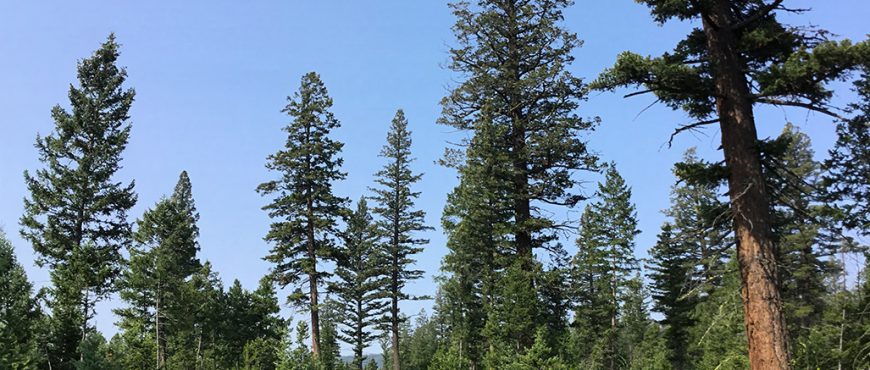Reforestation in the Douglas-fir Subzone: Are Reforestation Choices Meeting Objectives?
Forestry licensees and BC Timber Sales (BCTS) have a legal obligation under the Forest and Range Practices Act (FRPA) to regrow stands of trees after logging. Reforestation efforts must result in successful regeneration of trees and growth to healthy maturity. This is important both to ensure a sustainable flow of economically valuable timber into the future and to maintain broader environmental and community values in BC’s forests.
Interior Douglas-fir (IDF) forests in BC’s southern interior support a number of different uses and values, including timber, range, wildlife and species at risk, recreation, and visual quality. Some IDF ecosystems are often dominated by Douglas-fir trees of mixed age and size with a grassy understory. A common species for planting after logging is lodgepole pine because seedlings have a high survival rate and grow quickly above competing vegetation. Tree species composition in these ecosystems is reported to be shifting from fir to pine with potential implications for timber and non-timber values.
The investigation examined tree species composition trends, assessed licensee compliance with reforestation requirements and assessed the effectiveness of reforestation choices and government direction in establishing and maintaining resilient stands. Focus is on reforestation activities in the Cariboo, Thompson-Okanagan, and Kootenay Boundary Natural Resource Regions in areas logged under FRPA between 2008 and 2017. It includes forest licences, tree farm licences, woodlots, First Nations woodland licences, and community forests.
September 2020
Related News Release
Regenerating dry interior Douglas-fir forests proves challenging


